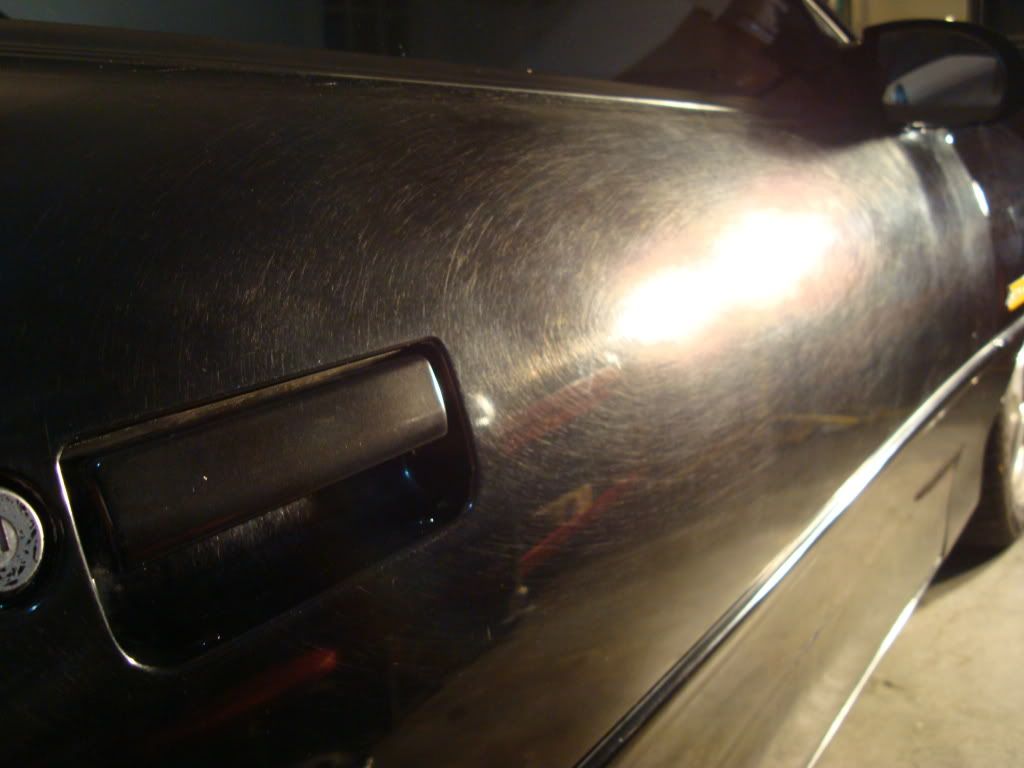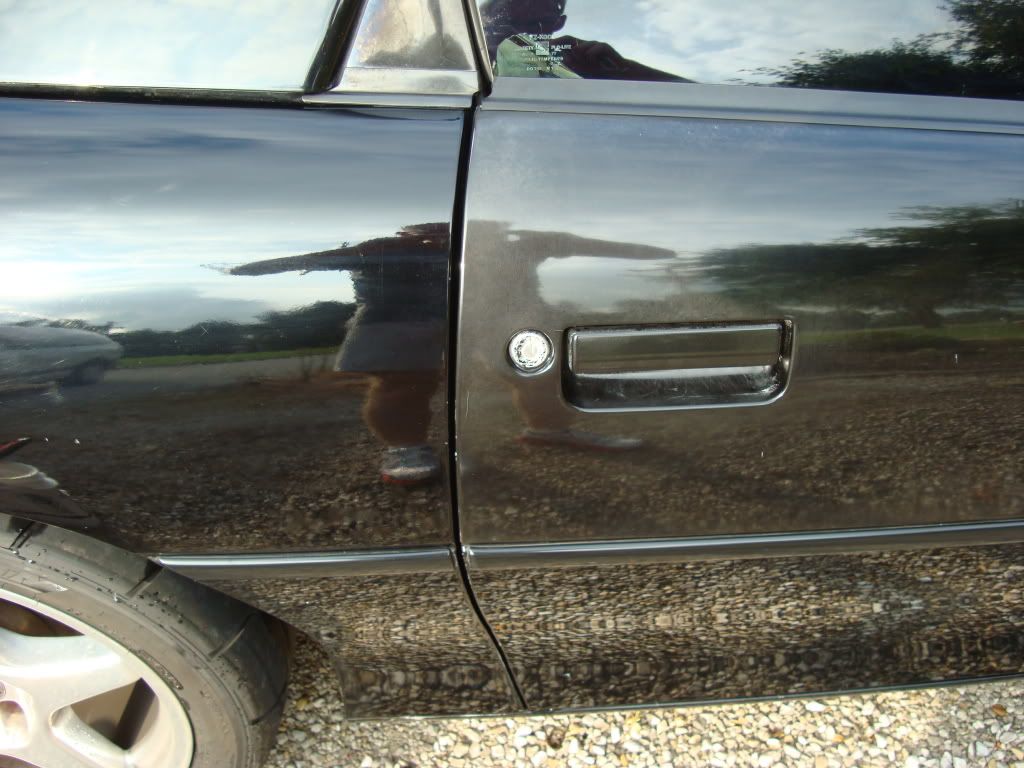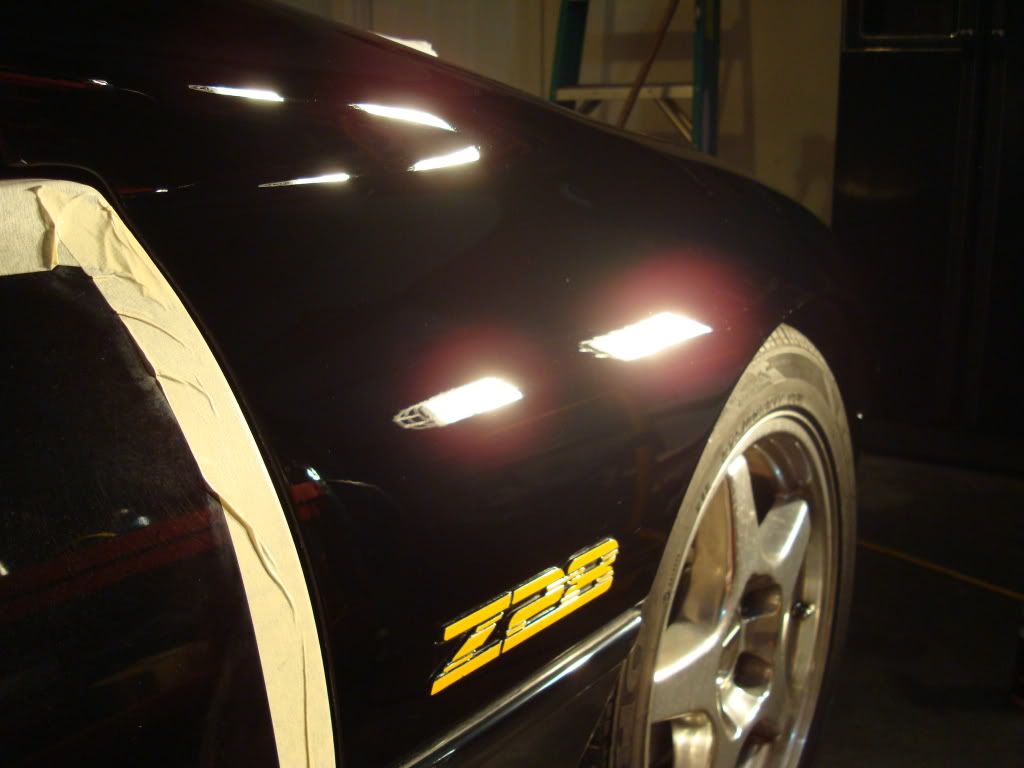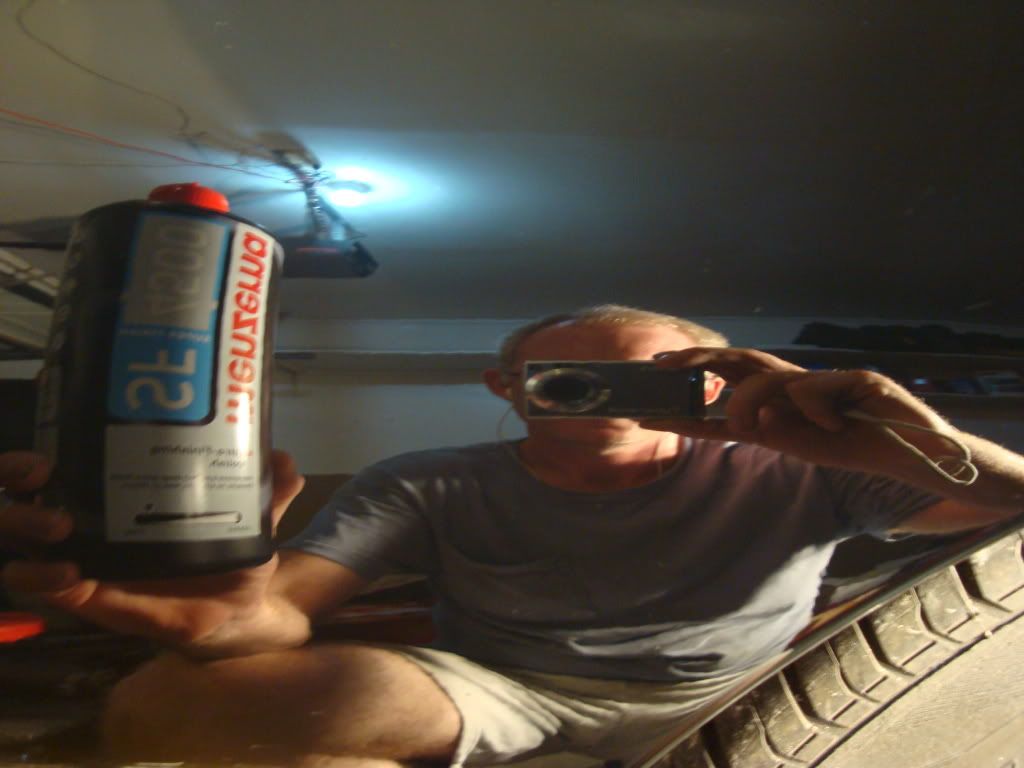I'm in the process of doing a full correction on a black 93' Camaro Z28. The passenger side door is, well, I can't find words for it so here's a pic. It is HEAVILY scratched up and oxidized. IMO it's not clear coat failure and the steps I have taken so far show the clear will come back to a high gloss but I can't get the defects out.


I started out with PC and Meg's 5inch MF pads and M105. Didn't touch it. You couldn't tell I had done anything at all. After talking to Jeff@Immaculant this afternoon he said the next step would be to try a rotary w/ a wool pad. That did very little. It brought the gloss back up but didn't touch the scratches/swirls. Then it was time for wet sanding with 2000 grit. I did this by hand using a semi flexible foam block. I had to do quite a bit of sanding to see any results. Whatever this clear is its super super hard. It would probably take at least two hours to hand sand it w/ 2000 to see a vast improvement. I firmly believe the least aggressive approach is the best however it comes to a point when you have to step it up some.
The hood has been repainted and has severe orange peel. It needs to be leveled in the worst way.

I have read several threads about the Trizact sanding discs and after what I went through tonight with the door I think that's what I need. What I don't know is what grit I should go with.
I'm not a newb at paint correction, wet sanding, etc. I know the dangers of a rotary and wet sanding and how fast you can see primer. I wanted to say that so everyone didn't think this was the first car I have done. This is however the first car that I've done that is THIS bad. The owner is a close friend of mine and came to me about repainting the car about six months ago. I told him that a full correction would be much cheaper and the car will still look really good. He said if I can't get the hood and door looking like the rest of the car to go ahead and respray it. Hopefully it won't come to that. The entire car is in bad shape but it's fixable. I did a test panel last night, MF pads/M105, LC white pad/M205, and then LC black pad w/ Menz 85RD.



My camera isn't good enough, but in the after the fender is like a reflection and you can see the lights in great detail. They get washed out in the pic.
Thanks for the help guys. I love learning how to do something new that I can add to my arsenal of ways to correct paint.
Jason


I started out with PC and Meg's 5inch MF pads and M105. Didn't touch it. You couldn't tell I had done anything at all. After talking to Jeff@Immaculant this afternoon he said the next step would be to try a rotary w/ a wool pad. That did very little. It brought the gloss back up but didn't touch the scratches/swirls. Then it was time for wet sanding with 2000 grit. I did this by hand using a semi flexible foam block. I had to do quite a bit of sanding to see any results. Whatever this clear is its super super hard. It would probably take at least two hours to hand sand it w/ 2000 to see a vast improvement. I firmly believe the least aggressive approach is the best however it comes to a point when you have to step it up some.
The hood has been repainted and has severe orange peel. It needs to be leveled in the worst way.

I have read several threads about the Trizact sanding discs and after what I went through tonight with the door I think that's what I need. What I don't know is what grit I should go with.
I'm not a newb at paint correction, wet sanding, etc. I know the dangers of a rotary and wet sanding and how fast you can see primer. I wanted to say that so everyone didn't think this was the first car I have done. This is however the first car that I've done that is THIS bad. The owner is a close friend of mine and came to me about repainting the car about six months ago. I told him that a full correction would be much cheaper and the car will still look really good. He said if I can't get the hood and door looking like the rest of the car to go ahead and respray it. Hopefully it won't come to that. The entire car is in bad shape but it's fixable. I did a test panel last night, MF pads/M105, LC white pad/M205, and then LC black pad w/ Menz 85RD.



My camera isn't good enough, but in the after the fender is like a reflection and you can see the lights in great detail. They get washed out in the pic.
Thanks for the help guys. I love learning how to do something new that I can add to my arsenal of ways to correct paint.
Jason
